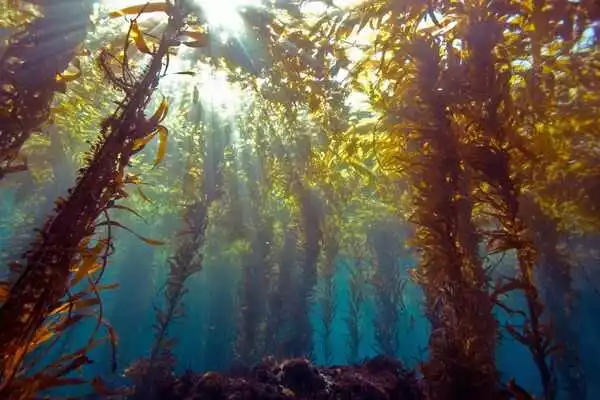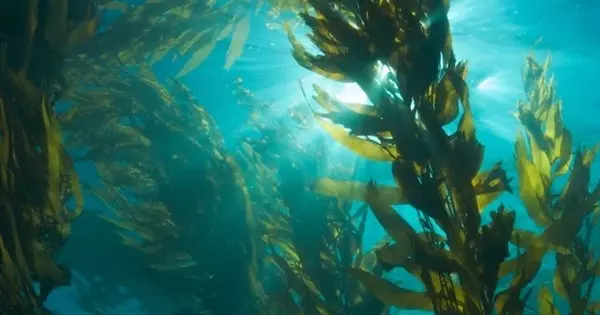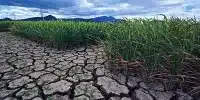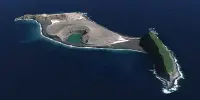Kelp forests grow in depths ranging from about 2 m to more than 30 m (6 to 90+ ft) along rocky coastlines. Kelp prefers nutrient-rich, cool waters with temperatures ranging from 5o to 20o C. (42o to 72o F). These brown algae communities thrive in clear water with good light penetration.
Kelp recruits most successfully in upwelling zones (areas where the ocean layers overturn, bringing cool, nutrient-rich bottom waters to the surface) and in areas with consistently cold, high-nutrient waters. Kelp experiences reduced or negative growth rates in warm water because the amount of dissolved inorganic nitrogen decreases significantly in marine waters warmer than 20oC.
Kelp forests are one of the most diverse and productive natural ecosystems on the planet, but significant swaths have been lost in the last 50 to 100 years, and many of the remaining systems are declining.
Rising ocean temperatures are causing kelp forest degradation around the world, but a University of Otago study hopes to help turn the tide and restore valuable habitats. Kelp forests are one of the most diverse and productive natural ecosystems on the planet, but significant swaths have been lost in the last 50 to 100 years, and many of the remaining systems are declining.
This study highlights the vulnerability of giant kelp development’s early life stages and helps us better understand past changes and the future trajectory of kelp forest ecosystems in Aotearoa.
Duong Le
Researchers in Otago’s Coastal People: Southern Skies Centre of Research Excellence are undertaking a project into what is driving current declines of kōauau/giant kelp in Aotearoa New Zealand.
Kelp can be found from the bottom of the North Island to the subantarctic islands and serves as a critical habitat for many culturally, recreationally, and commercially important species such as pua and kura (crayfish). The group aimed to understand the effects of increasing temperature on the early developmental stages of kelp in a study that was recently published in the international journal PLoS ONE.
According to lead author Duong Le, a Ph.D. candidate in the Department of Marine Science, while rising sea temperatures are known to be the cause of the decline, the specific mechanisms causing the loss are not well understood.

The researchers discovered that higher temperatures stimulated more spore release during the sporulation process. However, increased temperature had a negative impact on spore settlement, germination, and germ-tube length, which significantly decreased above 23.8 C, 21.7 C, and 19.8 C, respectively.
“This study highlights the vulnerability of giant kelp development’s early life stages and helps us better understand past changes and the future trajectory of kelp forest ecosystems in Aotearoa,” he says.
Co-author Dr. Matthew Desmond, also of the Department of Marine Science, says this is the first study to measure the thermal threshold of spore and germling life stages of giant kelp.
Dr. Matthew Desmond.
“This data is critical for forecasting how such an important ecosystem engineer will perform in the coming decades. This work contributes to our overall understanding of the species and aids in our efforts to protect and rebuild it.”
The researchers hope that their work will inspire people to become interested in the changes to natural environments that are occurring around them and to seek to understand what is causing them, particularly issues related to climate change and warming oceans.














